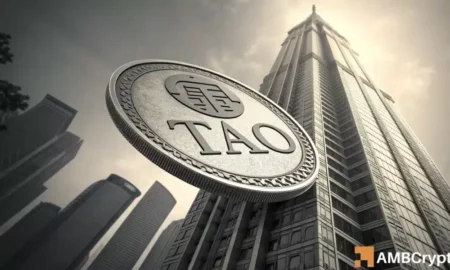North Dakota Launches Roughrider Coin: A Bold Move into DeFi
Introduction to Roughrider Coin
North Dakota is making headlines in the decentralized finance (DeFi) world with the announcement of Roughrider Coin, a U.S. dollar-backed stablecoin set to launch in 2026. This innovative financial initiative aims to enhance the efficiency of transactions within the state’s banking system, particularly serving local banks and credit unions. As part of the broader trend of embracing digital currencies, Roughrider Coin reflects North Dakota’s pioneering spirit and commitment to modernizing its financial landscape.
The Vision Behind the Name
The choice of the name "Roughrider Coin" pays homage to Theodore Roosevelt’s historic regiment, the Rough Riders, symbolizing bravery and pioneering efforts. This connection to state history is more than just branding; it conveys North Dakota’s aspiration to lead in the blockchain space. Governor Kelly Armstrong emphasized this point by stating that the state is taking a forward-thinking approach to create a secure financial ecosystem for its citizens. By tying its identity to a legendary figure, the state hopes to inspire confidence and innovation within its digital financial systems.
Fiserv’s Role in Implementation
A vital partner in this venture is Fiserv, a leading fintech company that developed the FIUSD platform, which will power Roughrider Coin. This platform has already proven its capability by handling over 35 billion merchant transactions in 2022, ensuring that Roughrider Coin will be both secure and efficient. Fiserv has designed this stablecoin to ensure interoperability with other digital currencies, allowing for seamless transactions across various blockchain networks. This capability positions Roughrider Coin to easily integrate into an expanding digital economy.
Responding to National Trends
The launch of Roughrider Coin aligns with nationwide trends in stablecoin adoption, which has reached unprecedented heights. Recent analytics from Visa highlighted that stablecoin transaction volume surpassed $5.8 trillion, indicating growing consumer preference for these digital assets over traditional banking methods. North Dakota’s initiative follows Wyoming’s lead in launching state-backed stablecoins and coincides with the recent federal legislation supporting this trend. This timing places Roughrider Coin at a pivotal junction within the evolving landscape of digital finance.
Implications for the Financial Ecosystem
The introduction of Roughrider Coin is set to transform North Dakota’s banking system by streamlining the movement of money across financial institutions. Governor Armstrong highlighted that the partnership with Fiserv is creating an innovative financial frontier that will benefit citizens and local businesses. As the financial ecosystem becomes increasingly competitive, banks will face pressure to provide fairer returns to depositors, fostering a more transparent and equitable financial environment.
Future Prospects in DeFi
As Roughrider Coin prepares for its 2026 launch, its impact will go beyond North Dakota. This initiative represents a significant moment in the broader DeFi movement, showcasing how state-level decisions can influence the adoption of digital currencies. With Fiserv at the helm, North Dakota is poised to become a leader in this space, demonstrating how pioneering policies can drive progress in the realm of digital finance. As regulatory frameworks evolve, the future of stablecoins like Roughrider Coin will play a pivotal role in shaping a secure and efficient financial ecosystem that meets the needs of modern consumers.
In summary, North Dakota is stepping into the DeFi arena with the launch of Roughrider Coin, a bold initiative that redefines the landscape of local finance. Through partnerships with leading fintech companies, the state aims to create a seamless transaction experience that reflects its storied history and commitment to innovation. While the launch date is set for 2026, the implications of Roughrider Coin are already being felt across the financial sector, setting the stage for a new chapter in digital finance.
















